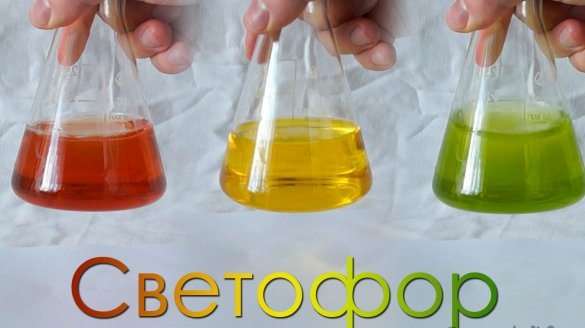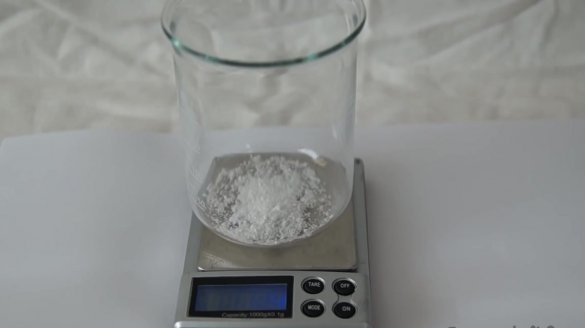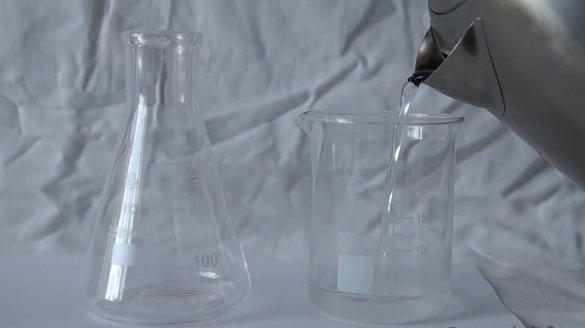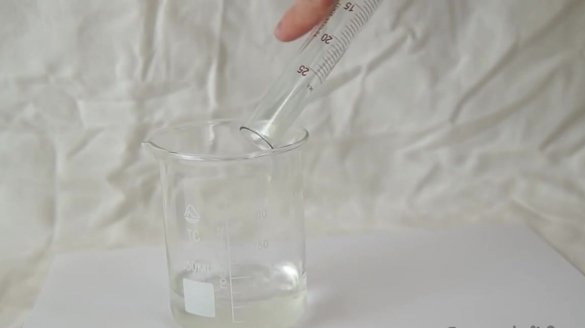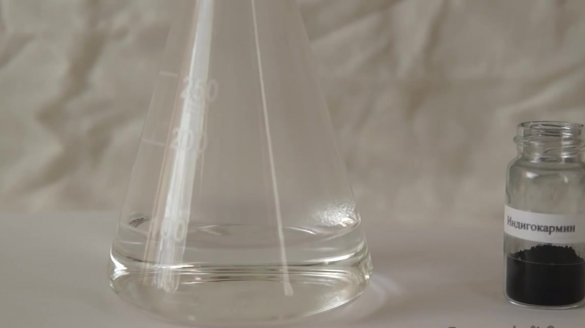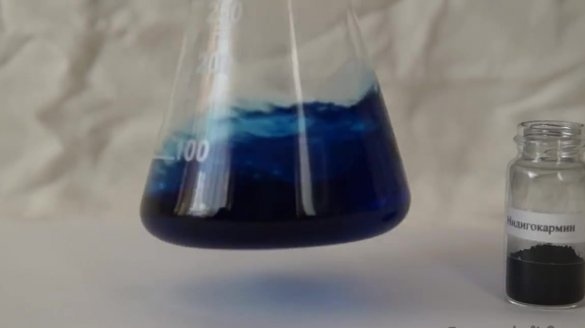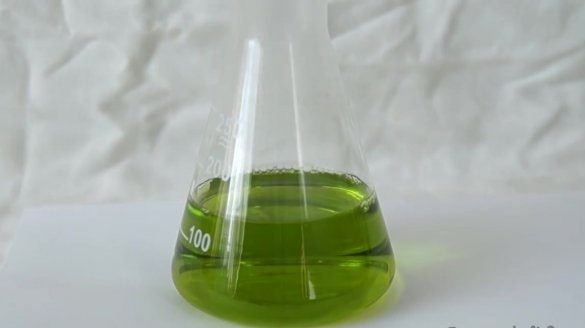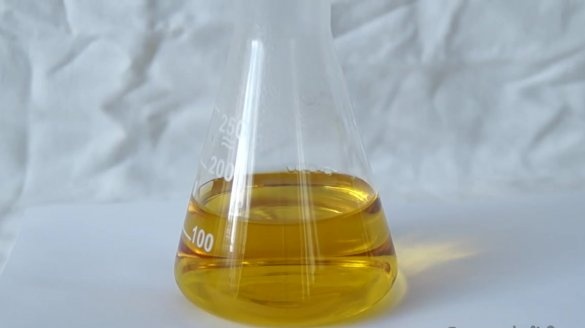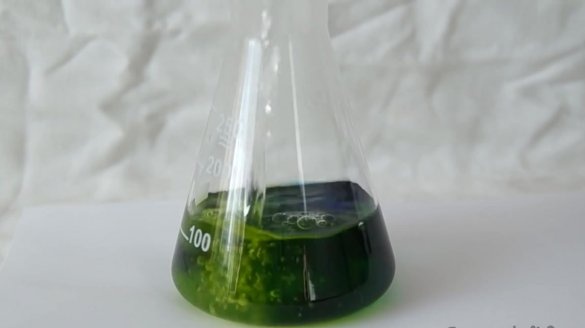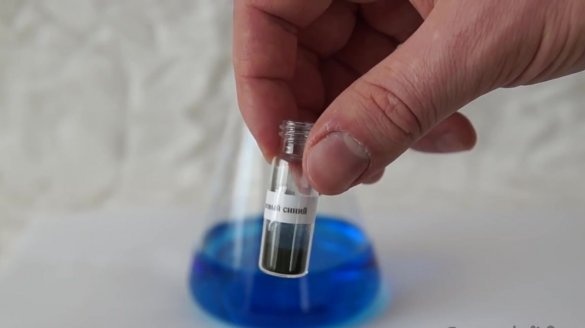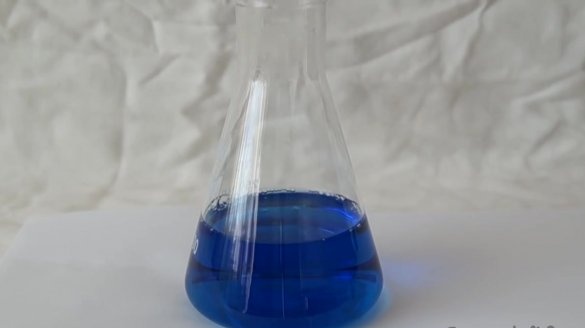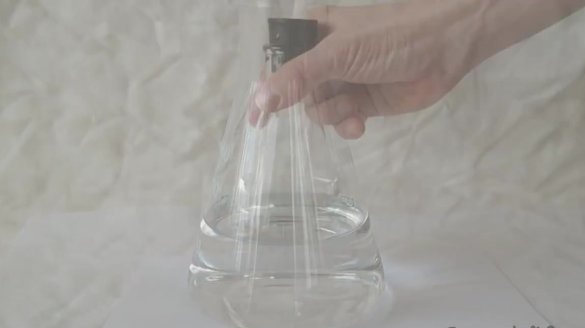We continue to present you beautiful and unique chemical experiments that strike not only with their beauty, but often with simplicity. This time we will review the chemical experiment, which can be easily repeated, resulting in chemical traffic lights.
We offer you to familiarize yourself with the process of experience in the video
What we need:
- glucose;
- hot water;
- sodium hydroxide;
- indicator - indigo carmine;
- the flask.
We proceed to obtain a chemical traffic light. First we need to weigh about 2 grams. glucose.
Dissolve suspended glucose in a small amount of hot water.
Next, add 10 ml of sodium hydroxide solution to our glucose solution.
To make a color solution, we need an indicator. The author uses the indigo carmine indicator, a small amount of which needs to be dissolved in hot water. To do this, pour water into the flask and fill the indicator there.
It turns out a solution of saturated blue.
After that we add an alkaline glucose solution to the flask and observe a beautiful color change: first the solution turns green, then it turns red and finally turns yellow. It is these colors that become transitional and remind everyone of the familiar work of the traffic light.
By the way, this reaction can be reversed by simply shaking the solution. With slight agitation, the solution will turn red, and with strong agitation, green. After this, the reaction will go in the opposite direction, that is, first the chemical traffic light will be green, then red, and then yellow. This is explained by the oxidation of the indicator with oxygen, which is contained in the air.
Also, a beautiful effect can be obtained using the "methylene blue" indicator. When an alkaline glucose solution is added, the indicator will discolor, and when shaken, it will turn blue.

